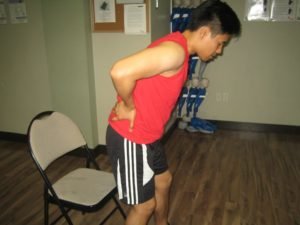A back muscle strain can occur once the individual overly stretches or tears a tendon or muscle. It is important to note that the lower back and hamstring muscles situated at the back of the thighs are at high risk to strains. A back muscle strain can leave an individual debilitated for days or even weeks, interfering with daily activities at work and at home. Even though mild and moderate cases of back muscle pain usually respond well to first aid measures at home, severe cases would require surgical intervention.
What are the causes of back muscle strain?
The most common cause of back muscle strain in the lower region include muscle strains in which the individual uses his/her back to carry out strenuous tasks such as lifting heavy objects. A vehicular accident, fall or poor body mechanics can lead to the occurrence of pain.
Symptoms of back muscle strain
Some of the symptoms of back muscle strain tend to vary depending on the severity of the injury sustained. A mild back strain can cause tightness of the back but with minimal swelling or difficulty walking. As for moderate back strain, it can cause spasms of pain, swelling and difficulty walking. In case the individual suffers from a severe back strain, there is severe pain and swelling right after the injury along with difficulty walking and a longer recovery period.

Home remedies for back muscle strain
The individual must be encouraged to rest for 1-2 days after sustaining a back injury. Nevertheless, resting for an extended period is not advisable since it leads to the weakening of the muscles as well as prolonging the recovery period. The application of heat is recommended for 20-30 minutes at a time. Other measures that can help involve instructing the individual to lie on the floor with legs propped on a chair, stretching and even a massage.
Over-the-counter medications such as acetaminophen or ibuprofen can be given to minimize the pain. There are also topical creams that contain ingredients such as capsaicin that helps dull the pain. If you want to learn basic care for back muscle strain, you can enroll in a course on first aid training today.
When to seek medical care?
If the home remedies at home could not provide relief to the back muscle strain, it is best to consult a doctor. The doctor will recommend the appropriate treatment or refer the individual to a specialist such as a physiotherapist. Once a physiotherapist is consulted, a rehabilitation program will be started to hasten the healing process. The program typically includes exercise, electrical therapy and ultrasound. In severe cases, surgery might be required to repair a torn tendon or muscle.
Consideration to bear in mind
Even though over-the-counter medications can help soothe the pain triggered by back muscle strain, it can cause certain side effects such as nausea, stomach upset, bleeding or shortness of breath. These medications must not be taken unless prescribed by the doctor.
